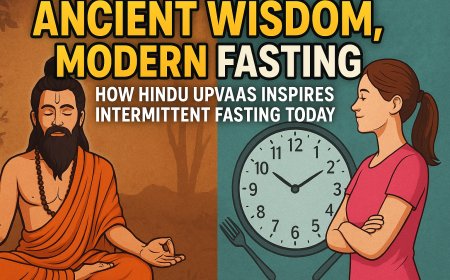Alternate Day Fasting: The Simple Strategy Backed by Science
Discover the benefits of alternate day fasting for weight loss and metabolic health. Learn how to start, what to eat, and why it's trending in the USA!

What Is Alternate Day Fasting?
Alternate day fasting (ADF) is a popular form of intermittent fasting where you alternate between days of fasting (or very low-calorie intake) and days of normal eating. On fasting days, you typically consume about 25% of your usual calories, while feast days allow you to eat freely.
In the U.S., alternate day fasting has gained traction as a simple, structured way to lose weight, improve metabolic health, and possibly increase longevity.
Why Americans Are Turning to Alternate Day Fasting
With increasing awareness of chronic diseases linked to poor diet, ADF offers a practical, research-supported tool for health-conscious individuals. Unlike restrictive dieting, ADF emphasizes when to eat, not just what to eat — making it flexible and sustainable.
Key Benefits of Alternate Day Fasting:
| Benefit | Description |
|---|---|
| Improved Cognitive Function | Studies show fasting can boost brain function and reduce brain fog. |
| Weight Loss | By naturally reducing weekly calorie intake, ADF helps shed pounds. |
| Heart Health | Lowers blood pressure, triglycerides, and bad cholesterol (LDL). |
| Increased Insulin Sensitivity | Enhances blood sugar regulation, lowering risk for Type 2 Diabetes. |
| Longevity | Animal studies link ADF to extended lifespan through cellular repair processes. |
How Alternate Day Fasting Works
ADF typically follows this rhythm:
-
Monday: Eat normally (Feast Day)
-
Tuesday: Fasting (~500–600 calories)
-
Wednesday: Eat normally
-
Thursday: Fasting
-
Friday: Eat normally
-
Saturday: Fasting
-
Sunday: Eat normally
This repeating cycle creates a calorie deficit while maintaining metabolic flexibility and avoiding the plateaus common with daily calorie restriction.
What to Eat on Fasting Days
Alternate day fasting doesn’t mean starvation — just strategic calorie reduction.
Best Foods for Fasting Days:
-
Steamed or roasted non-starchy vegetables
-
Boiled eggs or low-fat Greek yogurt
-
Low-sodium soups or broths
-
Lean protein (like baked salmon)
-
Lots of water, black coffee, or herbal teas
On feast days, maintain a balanced diet rich in protein, fiber, and healthy fats — avoid using it as an excuse to binge.
Who Should Be Cautious?
While alternate day fasting is generally safe, it’s not recommended for:
-
Pregnant or breastfeeding women
-
Children or teenagers
-
Those with a history of eating disorders
-
Individuals with diabetes (without medical supervision)
Always consult your healthcare provider before starting any fasting regimen.
Research Backing Alternate Day Fasting
Recent studies from the University of Illinois at Chicago and published in journals like Obesity and Cell Metabolism confirm that ADF is not only effective for weight loss but also improves blood pressure, fasting glucose, and cholesterol.
“Alternate day fasting can be just as effective — or even more effective — than traditional calorie-cutting diets,” says Dr. Krista Varady, a leading ADF researcher.
Alternate Day Fasting vs. Other Diets
| Diet Type | Frequency | Flexibility | Long-Term Sustainability |
|---|---|---|---|
| Alternate Day Fasting | 3–4 fast days/week | Moderate | High (no food group elimination) |
| Keto | Daily | Low | Moderate |
| Paleo | Daily | Medium | Moderate |
| 5:2 Diet | 2 fast days/week | High | High |
ADF offers a flexible, science-based approach that appeals to people who prefer structure without rigidity.
Key Takeaways
-
Alternate day fasting alternates between low-calorie and normal eating days.
-
Backed by U.S.-based research, it improves weight, insulin response, and heart health.
-
Works best when combined with nutritious eating on both fasting and feast days.
-
May not suit everyone — consult your doctor if you have pre-existing conditions.
-
Offers an easy-to-follow strategy for sustainable weight loss without complex meal planning.
FAQs About Alternate Day Fasting
How much weight can I lose with alternate day fasting?
Most people lose 1–3 pounds per week, depending on activity level and consistency.
Can I work out on fasting days?
Yes, but stick to light-to-moderate intensity like walking, yoga, or bodyweight exercises.
Will ADF slow down my metabolism?
No — research shows ADF preserves muscle mass and maintains metabolic rate, unlike chronic calorie restriction.
What happens if I feel too hungry on fasting days?
It’s normal early on. Hydration, herbal teas, and fiber-rich veggies can help reduce hunger. Most people adjust within 1–2 weeks.
Can I drink coffee while fasting?
Yes! Black coffee and tea (no sugar or cream) are allowed and can help curb appetite.


























